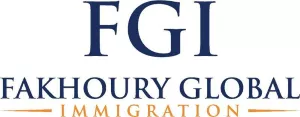- within Immigration topic(s)
- in United States
In late September 2025, the U.S. government moved swiftly to tighten requirements for H-1B specialty occupation workers. On September 19, 2025, a Presidential Proclamation introduced new petition rules, and within days U.S. Citizenship and Immigration Services (USCIS) and U.S. Customs and Border Protection (CBP) issued guidance clarifying implementation. The combined effect is immediate disruption for overseas hires and a narrower pipeline for future H-1B admissions, while current H-1B holders and petitions filed before the proclamation are largely protected, according to agency statements.
What changed, in plain terms
- The proclamation (effective September 21, 2025, 12:01 a.m. ET) conditions the issuance of new H-1B visas and the entry of certain H-1B beneficiaries on the payment of an additional $100,000 fee with new petitions — a dramatic increase compared with existing filing costs.
- The White House described the measure as a strategy to curb program abuse and prioritize U.S. workers by discouraging reliance on low-cost foreign labor and ensuring that H-1B hiring meets a higher threshold of need.
Immediate clarifications from USCIS and CBP
- USCIS issued a detailed FAQ and memo saying the proclamation is prospective: it applies to petitions filed after the effective time and does not apply to beneficiaries of petitions filed before that date, to currently approved petitions, or to holders of valid H-1B visas seeking entry.
- That reduces immediate chaos for many currently employed H-1B workers but leaves large uncertainty for companies planning to sponsor overseas hires or enter the FY-2026 cap process.
- CBP echoed that prospective scope in guidance and an internal memorandum made public, instructing officers to follow the proclamation in admitting aliens seeking H-1B entry consistent with the prose and to treat pre-effective-date filings differently.
- Still, CBP's messaging stressed that reports claiming broader retroactive application were wrong — which tempered some of the initial confusion at ports of entry.
Practical impacts for employers and foreign nationals
- Cost and hiring calculus
- Employers that rely on overseas hiring now face either absorbing a six-figure cost per new foreign hire or deciding not to proceed with overseas visa processing.
- Law firms and industry analysts predict the immediate result will be fewer petitions and a chilling effect on recruitment from key source countries.
- Lottery and cap concerns:
- Because the proclamation takes effect prospectively, questions remain about the 2026 H-1B lottery and whether employers will include the new fee in registrations or petitions.
- The USCIS guidance confirms the fee requirement applies to petitions filed after the date, which likely affects the next fiscal-year cycle.
- Possible exemptions and litigation:
- USCIS and DHS retain authority to exempt employers, occupations, or individuals deemed in the national interest.
- Expect agency guidance on exemptions, industry petitions for carve-outs (healthcare, research, critical infrastructure), and rapid legal challenges contesting the proclamation's scope and legality.
Longer-term tradeoffs and uncertainties
- If enforced for a sustained period, the fee and entry restrictions could shift global talent flows, raise labor costs for U.S. employers, and incentivize alternative destinations (or remote hiring models).
- Conversely, proponents argue the policy will create incentives to hire and train domestic workers.
- Either way, the proclamation creates a transitional period of legal and operational uncertainty until courts or further administrative guidance provide firmer rules.
What should stakeholders do now
Employers
- Consult immigration counsel immediately to reassess hiring strategies.
- Consider pausing or re-evaluating overseas hiring plans until the legal landscape clarifies.
- Monitor DHS, Department of State, USCIS, and CBP updates for possible exemption categories and procedural changes.
Foreign Nationals
- Beneficiaries with petitions filed before September 21, 2025, should document filing dates, and continue visa appointments without delay.
- Those whose petitions will be filed after the effective date should prepare contingency plans in case of delayed or cost-prohibitive processing.
Conclusion
The September 2025 Presidential Proclamation and rapid agency guidance have stabilized some immediate concerns by protecting current H-1B workers and pre-effective-date filings. However, the new $100,000 fee introduces a powerful cost and policy lever that will reshape hiring strategies, fuel legal challenges, and influence global talent flows. Employers, universities, and foreign nationals must act swiftly and remain vigilant as agencies and courts determine the proclamation's ultimate scope and longevity.
The content of this article is intended to provide a general guide to the subject matter. Specialist advice should be sought about your specific circumstances.


